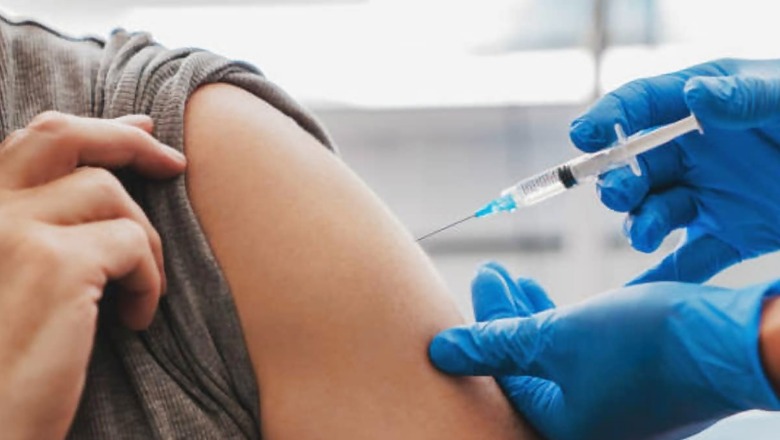
views
Vaccines have come a long way since Dr Edward Jenner first inoculated an eight-year-old boy against smallpox in 1796. Over the past three centuries, vaccines have revolutionised healthcare, saving over 154 million lives. A recent Lancet study shows immunisation has added 10.2 billion years of healthy life in the last fifty years. On average, each vaccination adds about 66 years of healthy life, promising a healthier future for everyone. This is not just a medical achievement, but a testament to our collective resilience and dedication to healthcare, a source of inspiration for all.
Immunisation has had a significant impact on India’s population. For example, thanks to polio immunisation, 20 million people in India who might otherwise be paralysed can walk. Since 1974, the EPI has boosted global newborn immunisation coverage against DTP from 5 per cent to 84 per cent in India.
India’s Achievements in Immunisation
India has made remarkable progress in immunisation, achieving significant milestones. The nation eradicated polio in 2014 and neonatal and maternal tetanus in 2015. Initiatives like Intensified Mission Indradhanush (IMI) were crucial to this success. According to HMIS data, these efforts increased full immunisation coverage from 44 per cent in 2005-06 to 89 per cent in 2021-22.
Tackling vaccine hesitancy, especially in rural areas, posed a challenge. However, India implemented effective strategies to address this. IMI phases focused on community engagement and mobilisation, using traditional and social media, regular community meetings, and tools like the “My Village My Home” (MVMH) campaign in Uttar Pradesh and Jharkhand. This campaign tracked each child’s vaccination status, significantly improving coverage and timeliness.
Collaboration and Innovation
Government agencies, NGOs, community leaders, and volunteers have worked together to promote immunisation effectively. Bihar’s “Muskaan Ek Abhiyan” (Smile Campaign) is a successful example. This approach increased community awareness, budgetary support, supervision, and beneficiary tracking and offered performance-based incentives for service providers. Educational interventions for school children and young mothers also boosted efforts in the state.
Another critical initiative, Intensified Mission Indradhanush (IMI) 3.0, launched in February 2021, targets 250 high-focus districts across 29 states and Union Territories. This program aims to reach every child and pregnant woman who missed routine immunisation due to the Covid pandemic, addressing disparities in coverage and ensuring no one is left behind.
Technology and Innovation in Immunisation
Technological innovations like the eVIN system have revolutionised vaccine logistics, providing real-time data on stocks and storage and ensuring vaccine quality. This system provides real-time information on vaccine stocks and storage temperatures across all cold chain points in the country, ensuring vaccine quality and availability.
Digital platforms like the CoWIN app, initially developed for Covid vaccination, have been adapted to support routine immunisation programs. These platforms facilitate efficient beneficiary registration, vaccination tracking, and data management, streamlining immunisation. By leveraging such technologies, India can enhance the reach and effectiveness of its immunisation campaigns.
Challenges and Future Directions
Despite our triumphs, we still face hurdles such as vaccine reluctance, logistical challenges, and socioeconomic considerations that contribute to incomplete immunisation. Addressing these issues necessitates a multidimensional strategy that includes technology, community participation, and policy assistance. The Immunisation Agenda 2030 aims for “zero-dose” status, ensuring every child gets essential vaccinations, especially in remote and rural areas. WHO-UNICEF estimates show 63 per cent of zero-dose children live in Bihar, Maharashtra, Madhya Pradesh, Rajasthan, and Uttar Pradesh.
Future Innovations & The Road Ahead
To achieve this, India must innovate and adapt by extending digital platforms, improving cold chain logistics, and enhancing community participation. Increased cash allocations for immunisation programmes, as well as greater international collaboration, will help these efforts. Next-generation vaccine research, requiring fewer doses or providing broader protection, can potentially advance immunisation tactics. International collaboration would be critical in sharing best practices and resources and keeping India at the forefront of global immunisation efforts.
India’s journey towards universal immunisation demonstrates the strength of consistent commitment, inventive initiatives, and dedicated healthcare personnel. By prioritising these efforts, we can secure a healthier future for all Indian children. Achieving the Immunisation Agenda 2030 will necessitate continued dedication and teamwork, but the benefits—a healthier, more resilient population—are well worth the effort. We must continue to support immunisation activities by raising awareness, participating in local campaigns, and pressing for more funding and resources. This collaborative effort can close the immunisation gap and pave the road for a healthy future for everybody.
Dr. K Madan Gopal works as an Advisor- Public Health Administration, NHSRC, MoHFW GoI; Dr. Sachin Shah is the Director of Neonatal and Pediatric intensive care services at Surya Mother and Child Super Speciality Hospitals. Views expressed in the above piece are personal and solely those of the author. They do not necessarily reflect News18’s views.




















Comments
0 comment